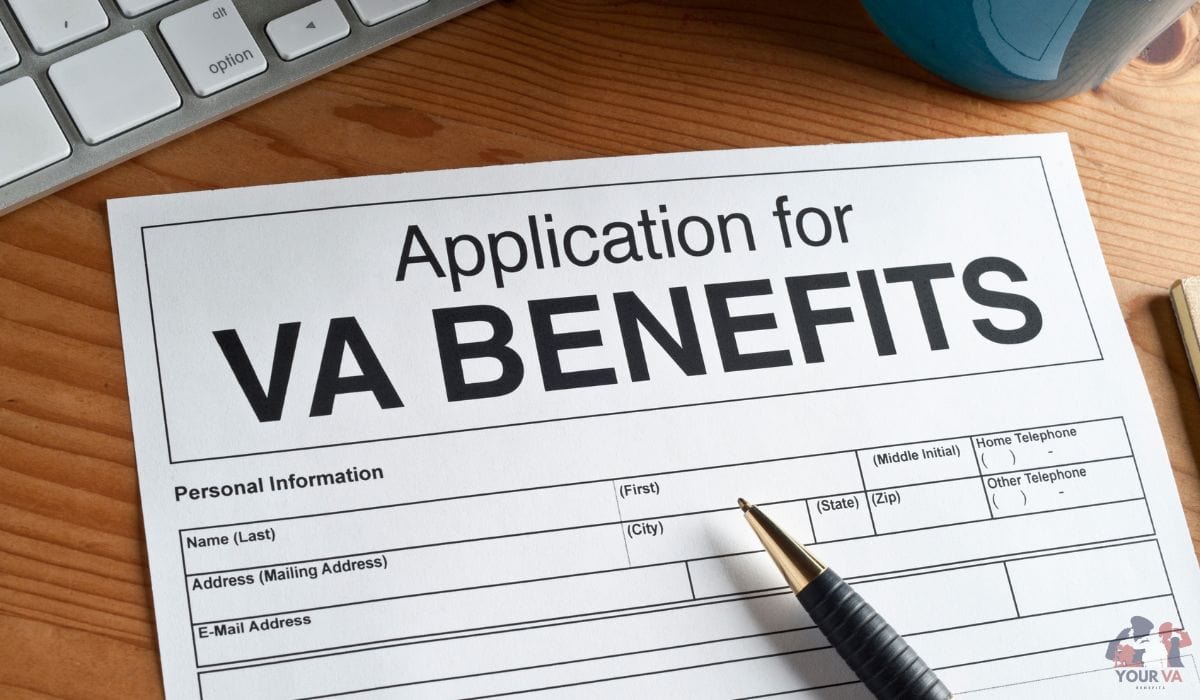Billions in disability compensation reached veterans last year, proving these benefits matter. If you’re preparing your first claim or seeking what you’ve earned, our comprehensive guide on initial VA disability claims filing breaks down the process to help you succeed.
If this is your first time, our next blog guides you on how to file first VA disability claim and offers clear insights to maximize your benefits.
It’s how the Department of Veterans Affairs acknowledges your sacrifice. Yes, gathering medical records and military records can feel complex. We get it.
That’s why we break the process for VA disability claims down clearly: from your VA Form 21-526EZ to your decision letter.
Just finished your service? We got you. Here’s our file VA claim after discharge to walk you through each step to get it right.
Summary of Key Points
- Start Strong: File an intent to file immediately to lock in your effective date for retroactive payments.
- Documents Win Claims: Gather military medical records, private medical records, nexus letters, and buddy statements. All the evidence must prove service-connected disabilities.
- Follow the Steps: Submit VA Form 21-526EZ, attend your C&P exam, and track claim status on VA.gov.
- Ratings = Payments: Your combined disability rating (0%-100%) decides monthly payments (2025: 10% = $175.51; 100% = $4,000+).
- Avoid Delays: Never skip exams, miss deadlines, or submit incomplete medical evidence.
- Denied? Appeal: Options include Supplemental Claim (with new evidence), Higher-Level Review, or Board Appeal.
Step-by-Step Process for VA Disability Claims Filing
Follow these 6 steps to navigate your VA disability claim smoothly:
Step 1: Gather evidence
Collect your military service records (DD-214) and military medical records. These prove your service and initial injuries.
Step 2: Secure medical proof
Get current medical evidence from health care providers linking your condition to military service. Private medical records count too!
Step 3: Complete VA Form 21-526EZ
Fill out this VA Form online (fastest) or via paper form. This officially starts your claim.
Step 4: Submit your claim
Use VA.gov, mail, or visit a VA regional office. An intent to file locks in your effective date for retroactive payments.
Step 5: Attend your C&P exam
Don’t skip this! VA uses this exam to determine your disability rating. Bring all the evidence.
Step 6: Await VA’s decision
The VA reviews your file during evidence gathering and final review. You’ll get a decision letter with your rating and benefits.
Breathe easy! This process for VA disability claims is simpler than many fear.
Essential Documentation You Need for Your Claim
Missing paperwork is the top reason for a denied claim. Avoid delays by collecting:
- Military records (DD-214, service treatment records)
- VA medical records and private medical records showing diagnosis & treatment
- A “nexus letter” from a medical professional connecting your condition to military service
- Buddy statements detailing your service-connected disabilities
- Signed VA Form 21-4142 allowing the VA to access your medical records
All the evidence must clearly support your disabilities. Think like a veteran service representative. Make your case undeniable.
Understanding VA Disability Ratings and Compensation
Your disability rating (0%-100%) directly controls your monthly payments.
10% rating = $175.51/month
100% rating = $3,831.30 (veteran alone) or over $4,200 (with dependents)
Multiple conditions? The VA calculates a combined disability rating. It’s not a simple addition. Your effective date (often locked by filing an intent to file) decides retroactive payments.
Can’t work due to severe disabilities? Total Disability Individual Unemployability (TDIU) pays at the 100% rate, even with a lower rating.
Common Mistakes That Delay Your VA Claim
Avoid these frequent pitfalls that stall claims:
- Missing or incomplete medical evidence: Gaps in VA medical records or private medical records hurt your case.
- Skipping C&P exams: Missing this tells VA you might not need care.
- Failing to establish service connection: No clear link between your disabilities and military service? Automatic denied claim.
- Inadequate buddy statements: Vague letters lack the evidence needed.
- Missing VA deadlines: Ignoring requests for more evidence halts your claim status.
- Gaps in treatment: Stop seeing health care providers? VA doubts severity.
Fix these early. They’re the top reasons for veterans appeals.
What Happens After You File Your Claim
Once your claim received, here’s the timeline:
- Initial Review (30-60 days): A veteran service representative checks completeness. Evidence gathering begins.
- C&P Exam Scheduling: You’ll get exam dates – attend promptly!
- Rating & Decision: A senior reviewer assigns your disability rating. Your decision notice gets mailed.
- Payment Processing: Monthly payments start within 15 days of approval. Retroactive payments hit if backdated.
Next Steps if Denied: Options include:
- Supplemental Claim (submit new evidence)
- Higher-Level Review (no new evidence, senior reviewer re-examines)
- Board Appeal (formal hearing)
Don’t panic if it takes 4-6 months. Check claim status on VA.gov.
See Also: The VA DENIED My Claim: Now What?
Conclusion
The process for VA disability claims can feel complex, especially with injuries that surfaced after service. But those monthly payments and potential retroactive payments are critical support you’ve earned.
Understanding how the VA assigns disability ratings and evaluates all the evidence directly impacts your benefits, whether it’s your first claim or you’re appealing a denied claim.
If you’ve missed a step, Your VA Benefits can help you. Let’s secure your rightful VA disability benefits together.
Frequently Asked Questions
How Long does the VA Disability Claims Process Take?
Most standard claims take 4-6 months from “claim received” to “claim decided.” Complex cases (like multiple service-connected disabilities) may take longer during evidence gathering and final review. Check claim status on VA.gov for updates.
Can I Work while Receiving VA Disability Compensation?
Yes! Most disability ratings (10%-90%) allow full employment. Only veterans with a 100% rating or Individual Unemployability (IU) face work restrictions. Your monthly payments aren’t income-based like Social Security.
What if my VA Disability Claim is Denied?
Don’t panic. File a Supplemental Claim with new evidence within 1 year. Options include a Higher-Level Review (no new evidence) or Board Appeal. Many denied claims succeed with stronger medical evidence.
Do I Need Help Filing my VA Disability Claim?
Not required, but recommended for complex cases. Veteran service representatives (VSOs) or accredited agents understand how the VA reviews evidence and can streamline your claims process. Mistakes delay benefits.
Can I File Multiple Conditions in One Claim?
Absolutely. List how many injuries or illnesses relate to military service on your VA Form 21-526EZ. This saves time and creates one combined disability rating for related compensation benefits.
What’s the Difference Between VA Disability and Social Security Disability?
VA disability compensates service-connected disabilities (no income limits). Social Security Disability Insurance (SSDI) pays for any disabling condition if you’ve paid enough work credits. You can receive both benefits.






